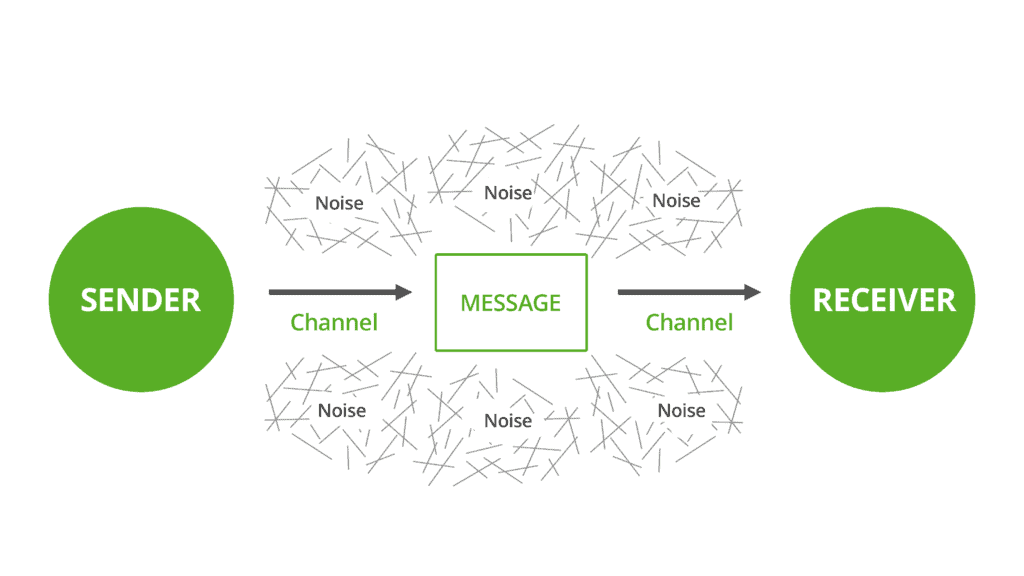Are you communicating or just spewing information? Information is text, charts, and graphs. Just because you share it, doesn’t mean people understand it. Communication occurs when the people who receive your information understand it. The communication model you choose helps determine whether the receiver understands the message you intended. The burden of responsibility for communication is on you, as the sender. When you are responsible for communicating an idea, a policy, new procedures, or anything else, how do you ensure you’re actually communicating and not just spewing information?
How Do You Choose the Right Communication Model?
You probably don’t give much thought to choosing a communication model. Most people make that choice subconsciously. You can, however, choose to be more intentional about your communication objective and which model will best achieve your goal.
The Linear Communication Model
The linear model is one of the two communication models that describe most communication. It is one-way, non-interactive communication. Examples could include a speech, a television broadcast, or sending an email.

In the linear model, the sender sends the message through some channel such as email, text, Slack, or even an old-school printed memo, for example. Noise can affect the successful delivery of the message. Noise could include actual noise such as that in a warehouse or factory, emotional noise such as political biases, or even a lengthy message that spans multiple pages resulting in TLDR among the receivers.
The Transactional Communication Model
The transactional model is two-way and interactive. In the transactional model, both parties are both sender and receiver. It happens in real-time and, generally, they must both be present, even if it’s via technology such as Skype. Technologies such as texting or Slack can also use the transactional model when back-and-forth conversations take place.

The Transactional Communication Model
Is one model or communication style better than the other? Not at all. You choose the best model to accomplish your goal. Communication can also move back and forth between the models. For example, a training session might start with a lecture (the linear model), followed by a question and answer session (the transactional model). It might then go back to a lecture (linear), and finish with a group discussion (transactional). A Slack message might start as the linear model when it’s broadcast to a group, then transition to the transactional model as individuals respond to the message, interacting with the sender and each other.
Examples of the transactional model include a face-to-face meeting, a telephone call, a Skype call, a chat session, interactive training, or a meeting in which all attendees participate by sharing ideas and comments.
As with the linear model, noise can affect communication. Noise can include all of the previous examples. It might even be affected by one person feeling hungry or having gotten into an argument earlier with a family member.
Choosing a Model
- If you’re getting ready to roll out some new software, you might start with an email or Slack message detailing the change and the reason for it (linear) and follow it up with small group discussions in which you answer questions and concerns about the roll-out (transactional).
- As the sender, you’re responsible for the message getting through. You must then select the model most appropriate for accomplishing your objective.
- You must also meet the other person (or people) where they are and use their preferred communication style, whether it’s text, chat, Zoom, email, or even an old-school paper letter. If you want your message to get through, choose the communication style and technology preferred by the receiver.
Effective communication is critical to getting your ideas accepted by others. It’s easy to put information in front of people. Successfully communicating your ideas, however, requires thoughtfulness and intentionality. Understanding the two communication models and when to use each one will help you communicate persuasively. Do it right and you’ll get your message across!
Next Level IT Customer Service Training
Enroll your team now in Compassionate Geek IT online customer service training so they can work together, get things done, and take care of customers.

